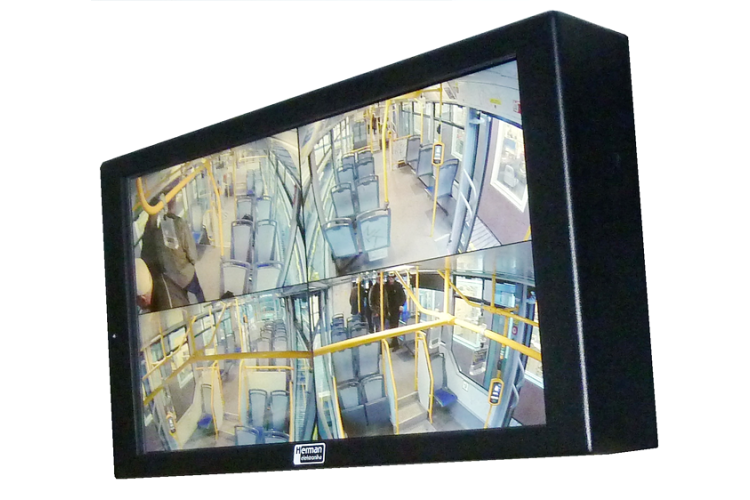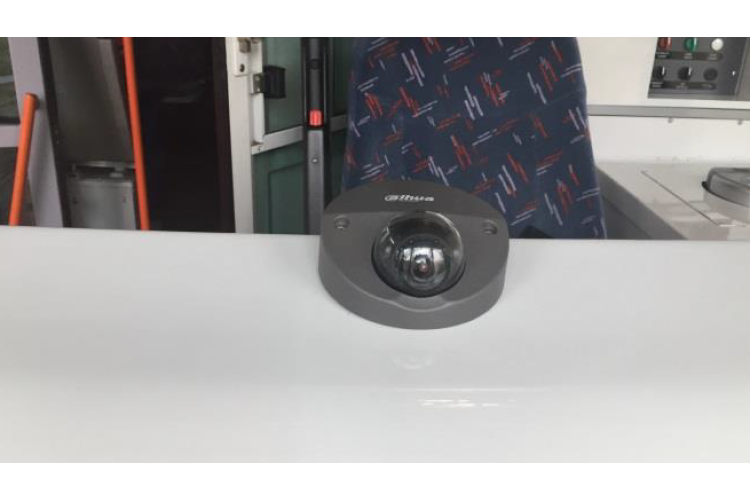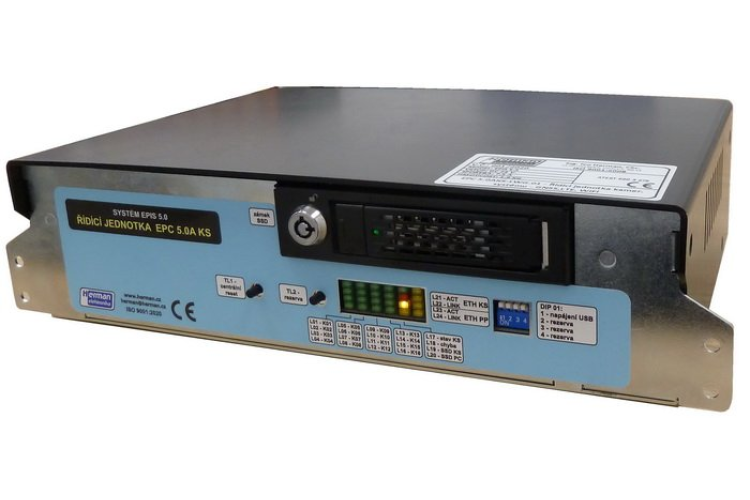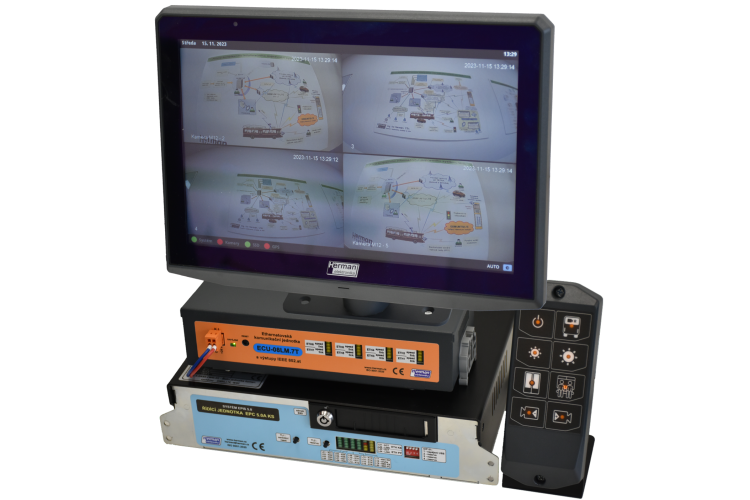Camera systems
In-vehicle camera systems are designed to record events from public transport vehicles or their surroundings. These include:
- monitoring what is happening in the vehicle according to set rules,
- monitoring what is happening on boarding and alighting - because they monitor the outside area, they only switch on when the door is opened,
- tracking behind the vehicle - activated when the vehicle is put into reverse. In this case, the camera operates in real-time mode (image delay is minimized)
- monitoring of events in front of the vehicle
- monitoring the status of the collector on the overhead line - activated automatically when the system is activated on the vehicle.
It is then possible to specify which cameras are to record and which are then used only to display what is happening in front of the cameras. For camera systems, if they are to be integrated with on-board information and check-in systems, it should be taken into account that one camera will provide approximately the following data stream:
- 2,5 to 4 Mbit/s for disk recording
- 0,75 Mbit/s for quad display on an LCD monitor
depending on the set video stream compression and the number of frames/second. Hence, integration into one network is suitable only for 6-7 cameras. But even here it is advisable to make an analysis of the state of communication in the network.
In practice, therefore, the system is arranged in such a way that it can create a separate Ethernet network in the vehicle dedicated only to the camera system. This configuration is particularly suitable if there are multiple cameras in the vehicle and the data traffic from the cameras does not then burden the traffic on the bus for the control of the information and check-in system. This advantage is particularly evident when using cameras with real-time data transmission (reversing cameras, taxi cameras, etc.).
In its current configuration, the system thus enables the creation of:
- integrated camera systems - these are connected to the on-board computer, which allows their control and at the same time allows the recordings to be directed to the processing centre during on-line reading.
- island camera systems - these are built as far as possible independently of the on-board IT and the on-board computer.
- frontal recording camera - captures and stores what is happening in front of the vehicle and is usually used as evidence in the resolution of traffic accidents. In this case, integration with the on-board computer is advantageous.
The system can work alone or in conjunction with the EPIS 4.0x on-board computer for public transport or the EPIS 5.0Ax on-board computer for VLDs.




